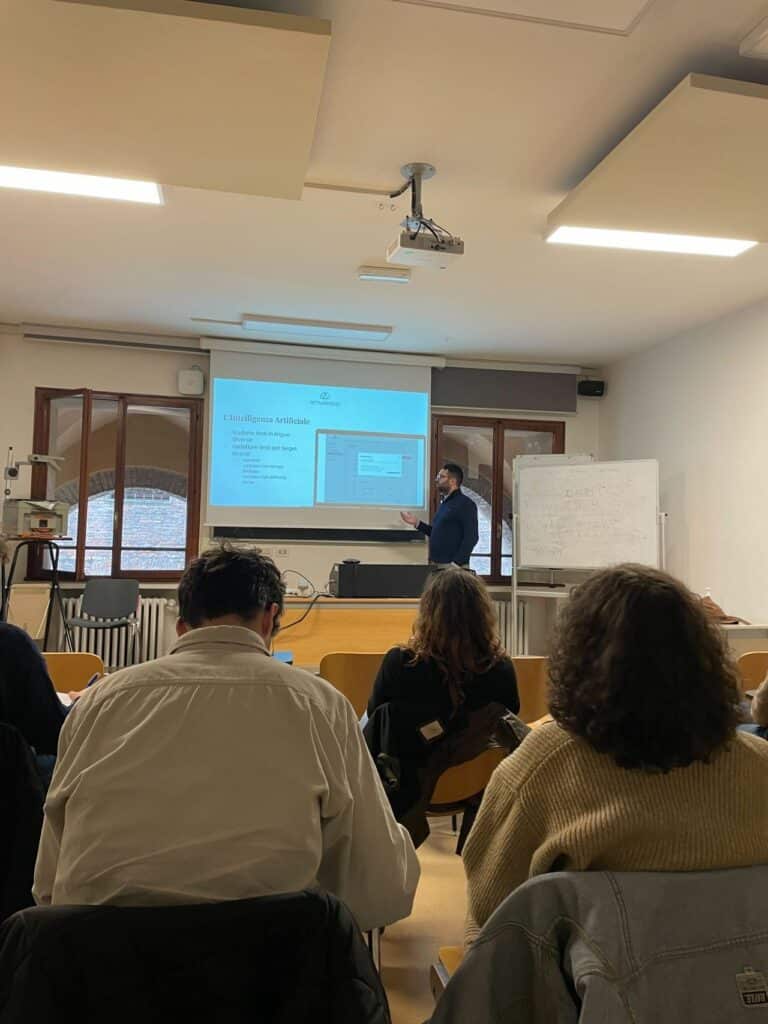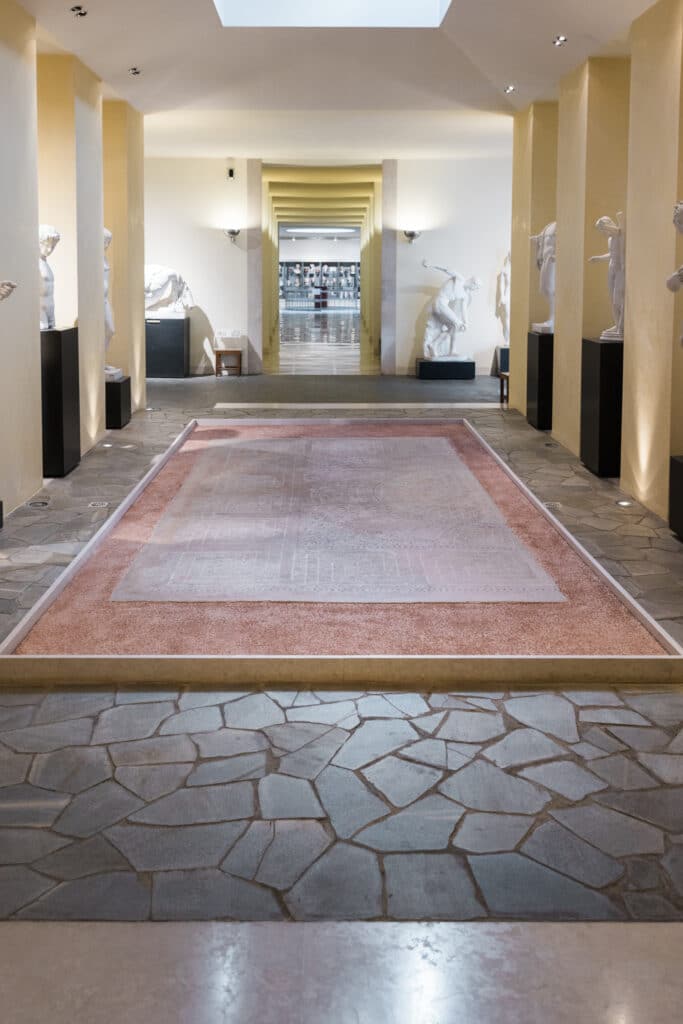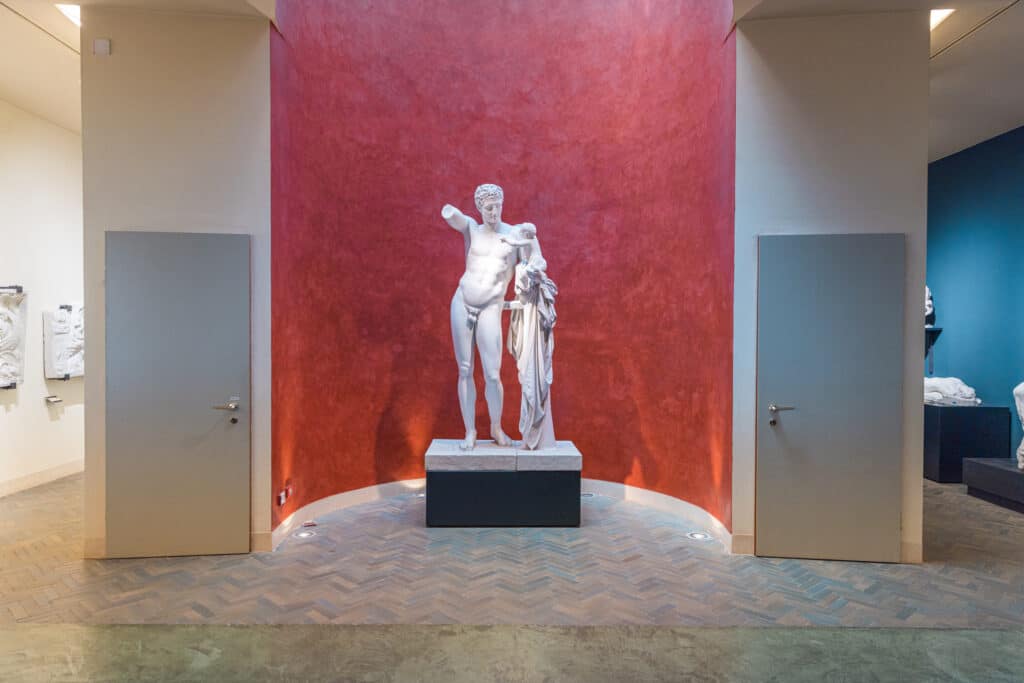Museums are custodians of humanity’s cultural and historical heritage. But, in a world in continuous evolution, even the experience of visiting requires transformation.
And, if the opportunity arises to put this his mission, amuseapp immediately comes into play: this is the case of the recent path undertaken with the contribution of theUniversity of Padua through the call for proposals “Innovative Student Projects-2021.”.
The project, dedicated to the creation and implementation of practical activities for management, communication and museum enhancement through new digital solutions, saw the involvement of 3 realities (Larin Group, the Department of Cultural Heritage of the University of Padua and the Museum of Archaeological Sciences and Art) and the participation of 12 students; the 15 hours of training meetings, the first part of this collaboration, led to the identification and implementation of two co-designed museum itineraries.
Let us see, specifically, how this common path developed.
Context analysis and problem definition
The first phase of work carried out together with the students focused on theanalysis of the current museum context and the problems that currently plague it.
It was clear from this study that the entire museum sector is facing major transformations due to new tourism trends, technological advances and socio-demographic challenges.
The same ICOM (International Coucil of Museums), aware of the situation, has recently updated the very definition of a museum, as follows:
“A museum is a permanent non-profit institution serving society, which researches, collects, preserves, interprets and exhibits cultural heritage, tangible and intangible”.
The visitor increasingly seeks new ways to accomplish the different stages of the journey within the museum, seeking aexperience that is different from the usual and (for this reason) memorable. A picture also emerges in which the aging of the population is accompanied by an Gradual increase in the rate of digital literacy and of connectivity, with all the relevant consequences: generational change, the search for new stimulation and greater ability to use the most innovative technologies.
How to give answer to the needs that emerged from the analysis? One point from which to begin change, shared among the project’s protagonists, is given by one of the most characteristic elements of the museum visit: the audioguide.
Indeed, the view was shared that the ‘evolution in a digital and experiential key of these real cultural fossils could be the beginning of a general revolution of the concept of visitation: a tailor-made, personalized and engaging audio(visual) path; what is needed, therefore, is a greater interactivity and involvement of visitors, for a journey that must go beyond the simple stay inside the museum.
And that is where amuseapp comes in.

The amuseapp framework: educate, enhance, retain
amuseapp focuses on theeducating visitors before, during and after the visit, creating customized paths and content. How? By educating the visitor prior to the visit, enhancing the value of the visitor’s experience, and ultimately building loyalty with the target audience.
After showing each of the steps that make up this framework, amuseapp shared with students and museum the concept of “museum avatar”: a representation of typical visitors, defined by a set of characteristics (demographics, hobbies, skills, etc.) that make it possible to create an overall experience suited to each of them, which is essential to subsequently define the different stages of the “visitor journey”.
Content and artificial intelligence
During the training (and before proceeding to the co-design phase) amuseapp showed project participants the potential offered by the integration of artificial intelligence: through the use of specific and well-defined prompts, in fact, AI is able to simplify e accelerate the process of creating museum content, from textual content to audio guides.
This technology can be particularly useful in rewriting content to adapt it to different museum avatars, in the multilingual translation and in the automatic generation of voiceovers: in essence, AI offers enables the delivery of accessible and engaging content to a wide audience of visitors, modernizing and evolving the concept of audioguide and museum content.
The co-design phase
The knowledge shared to students and museum in the training hours was used not only to identify the most useful information and to produce the content to be included within the profile of the Museum of Archaeological Sciences and Art on amuseapp, but also to co-design two routes dedicated to a specific target audience of visitors.
In addition, to make the experience even more engaging, the guidance offered by the students and the museum allowed amuseapp to conduct a shooting of the visit route with specially designed photographic shots..


The mobile app, updated with all the information, the photos e texts produced during the course of the project, will allow visitors to easily access all the content and enjoy a different museum experience than the classic one. Instead, the WebApp available to the Museum of Archaeological and Art Sciences offers the possibility of Independently manage content and activities, showing useful insights to improve and refine the visitor experience.

The next steps
The project carried out in collaboration with the University of Padua and the Museum of Archaeological Sciences and Art allowed amuseapp to gather information that will prove very useful for the future of the application.
In addition to the monitoring of access and visitor behavior, the next steps will include the improvement of accessibility and graphic design, as well as the carrying out online and offline promotional activities. In addition, other university museums will also be included in the circuit, expanding the reach of amuseapp and contributing to the goal of involving more and more cultural institutions.
amuseapp: the evolution of the museum experience
amuseapp makes the museum experience more engaging, accessible e adapted to the needs of visitors. Thanks to student input and collaboration between different entities, the project demonstrated how revolutionizing the way we interact with our cultural heritage is within everyone’s reach.
By expanding the number of museums involved, now more than 250, amuseapp will be able to enrich the knowledge of more and more people, helping to preserve and enhance Italy’s extraordinary historical and artistic heritage.

